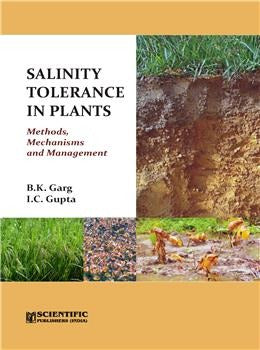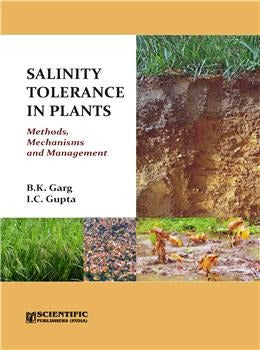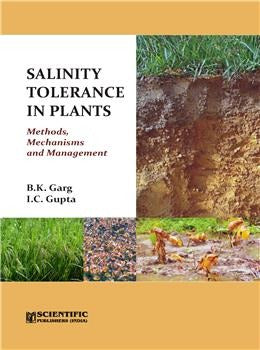Salinity Tolerance in Plants: Methods, Mechanisms and Management
Salinity Tolerance in Plants: Methods, Mechanisms and Management is backordered and will ship as soon as it is back in stock.
Couldn't load pickup availability
Genuine Products Guarantee
Genuine Products Guarantee
We guarantee 100% genuine products, and if proven otherwise, we will compensate you with 10 times the product's cost.
Delivery and Shipping
Delivery and Shipping
Products are generally ready for dispatch within 1 day and typically reach you in 3 to 5 days.
Authors: B. K. Garg & I.C. Gupta
Publisher: Scientific Publishers
Language: English
Edition: 1st Edition (2019)
ISBN: 9788172337322
E-ISBN: 9789387307957
Binding: Hard Bound
Pages: 435
Size: 6.5 x 9.75 inches
Weight: 860 grams
Description:
"Salinity Tolerance in Plants" addresses the complex challenges surrounding salinity tolerance, which affects numerous morphological, physiological, and biochemical processes at the cellular, sub-cellular, and whole plant levels. This comprehensive book comprises eleven chapters that explore the various aspects of salt tolerance, including how plants respond to salinity and sodicity, crop tolerance at different growth stages, and criteria for evaluating tolerance.
The mechanisms of salt injury, such as osmotic stress, ionic imbalance, and nutrient disruptions, are discussed using an integrated approach. The book elaborates on recent advancements in the understanding of photosynthesis, respiration, carbohydrate and nitrogen metabolism, enzyme dynamics, plant hormones, and symbiotic nitrogen fixation in legumes.
Special attention is given to the interaction between essential nutrients and salinity, which is crucial for alleviating the adverse effects of salt stress. The authors also present comprehensive details on various mechanisms of salt resistance, such as osmoregulation through organic and inorganic solutes.
Additionally, the book explores several methods for introducing salt tolerance in plants, including breeding techniques, genetic variations, physiological approaches, tissue culture, somaclonal variation, somatic hybridization, and recombinant DNA technology. It also addresses the nature and properties of salt-affected soils and groundwaters and offers principles for ameliorating and managing these critical challenges.
Finally, the book includes practical approaches to afforestation and agroforestry techniques for salt-affected soils, with a focus on salt-tolerant tree species and appropriate tree-crop combinations.
This book is an essential resource for researchers, practitioners, and students interested in understanding and managing salinity tolerance in plants, and it offers valuable insights into mitigating the challenges of salt-affected ecosystems.





